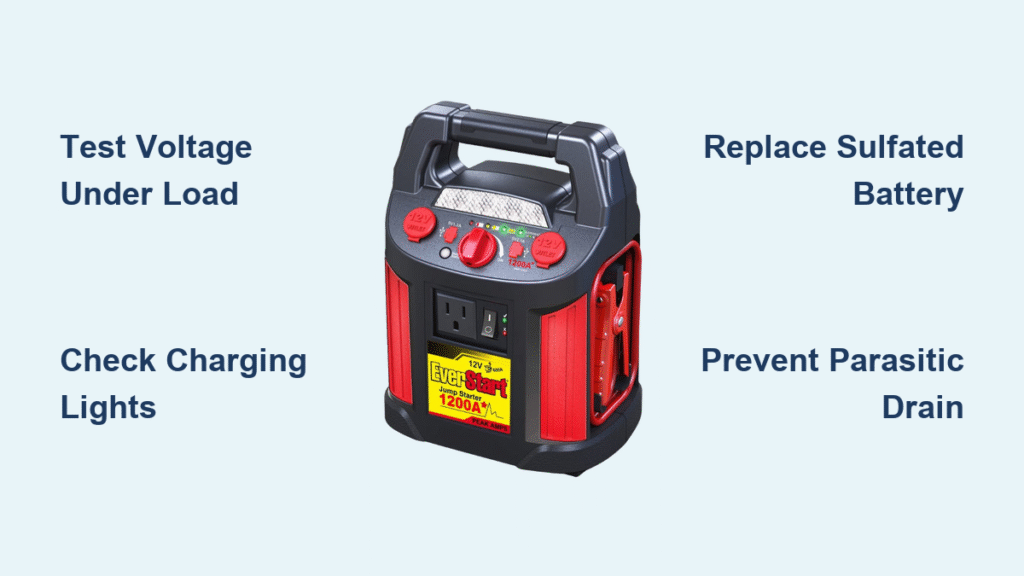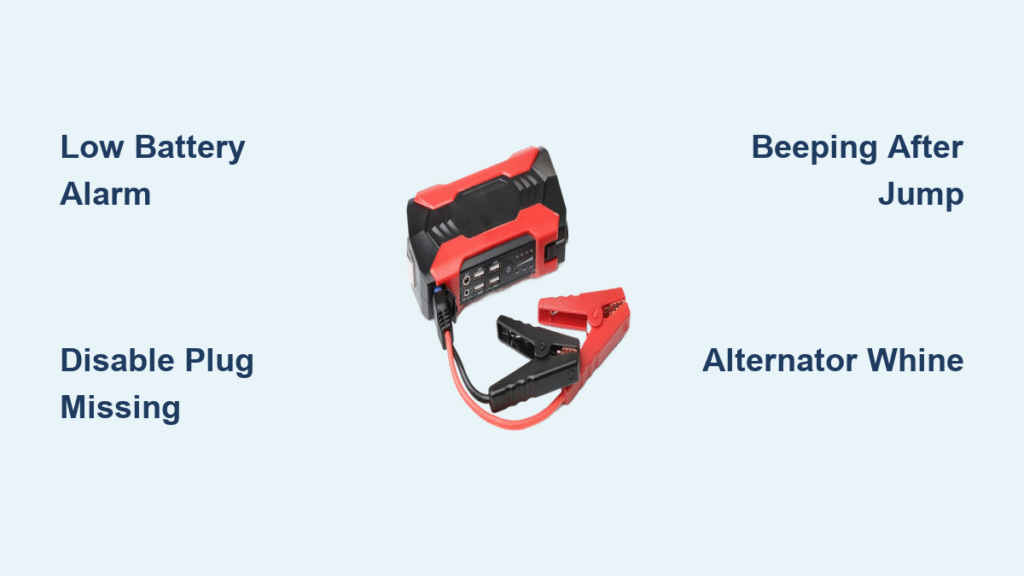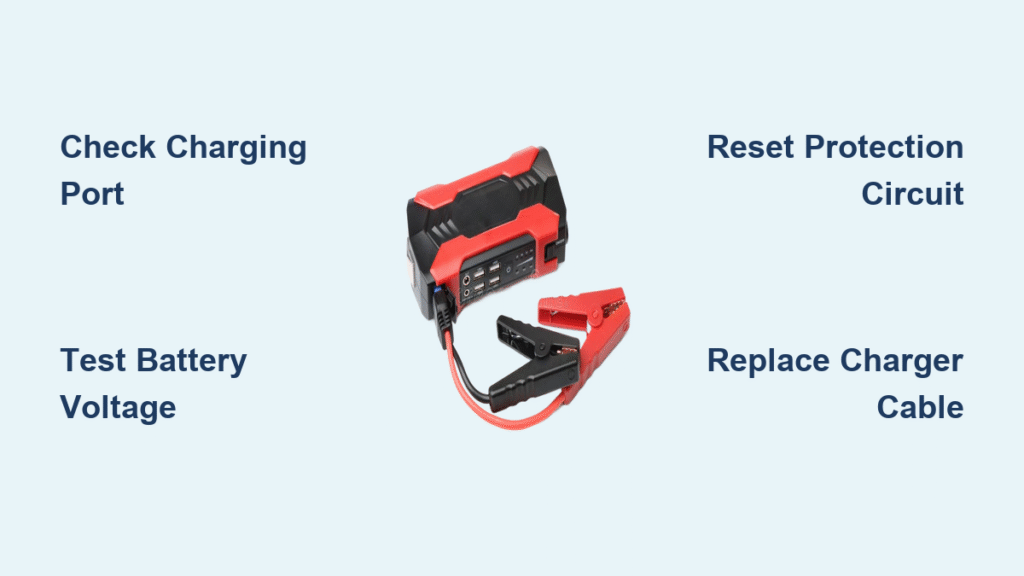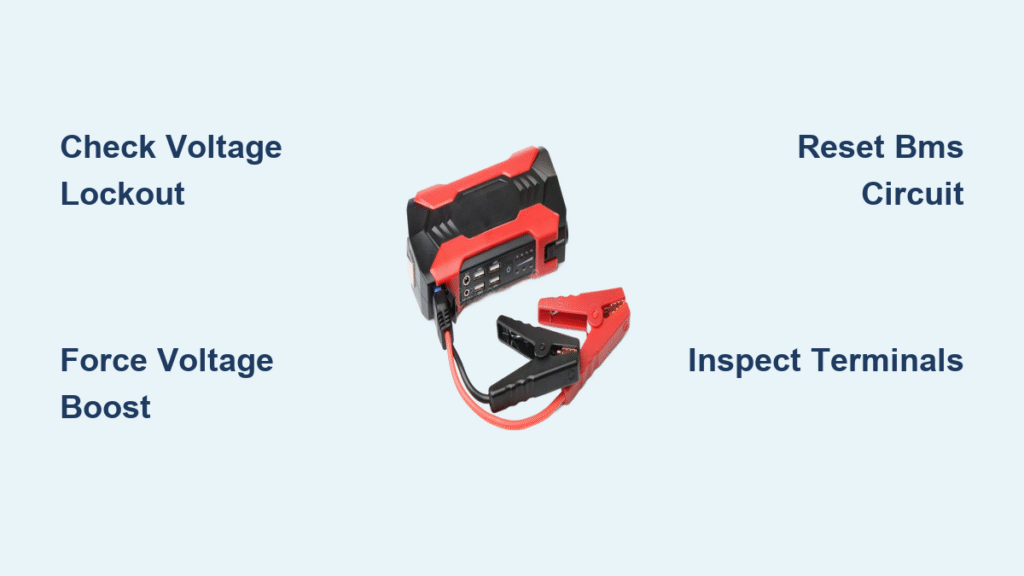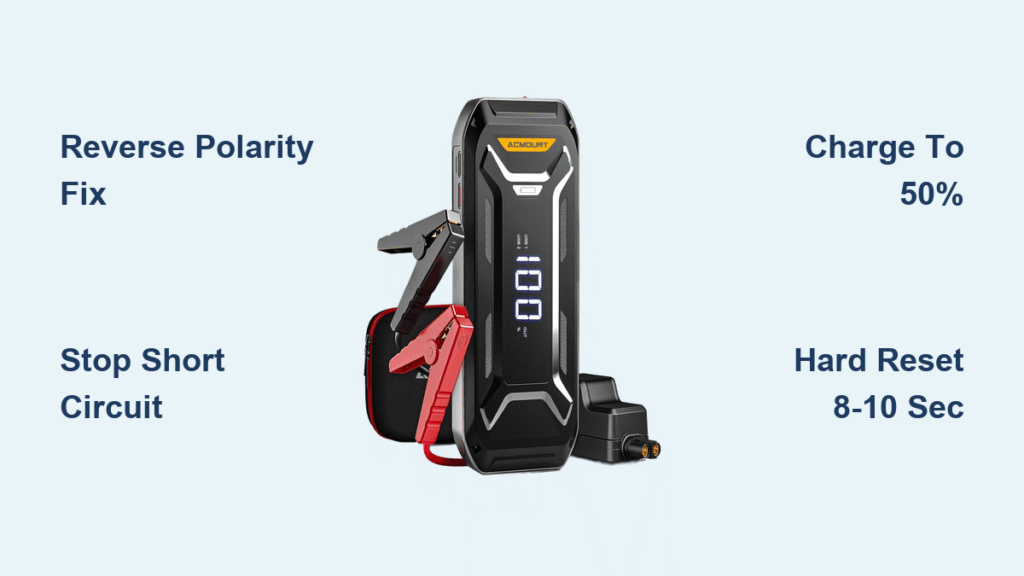Your EverStart Jump Starter 1200A sits silent when plugged in—no charging light, no fan whir, just an expensive paperweight. Yesterday it revived your neighbor’s dead truck battery without hesitation. Today, it acts like it’s switched off completely. This sudden failure isn’t random; it’s the predictable result of how sealed lead-acid batteries degrade and charging circuits eventually fail. When your EverStart jump starter 1200A won’t charge, you’re facing one of three critical failures: sulfated battery cells, a dead charge controller, or parasitic drain eating your power. The good news? You can diagnose and fix 80% of these issues in under 15 minutes with basic tools. Most repairs cost less than $35—far cheaper than replacing the entire $120 unit.
Immediate Voltage Collapse: Why Your Jump Starter Dies Seconds After Unplugging
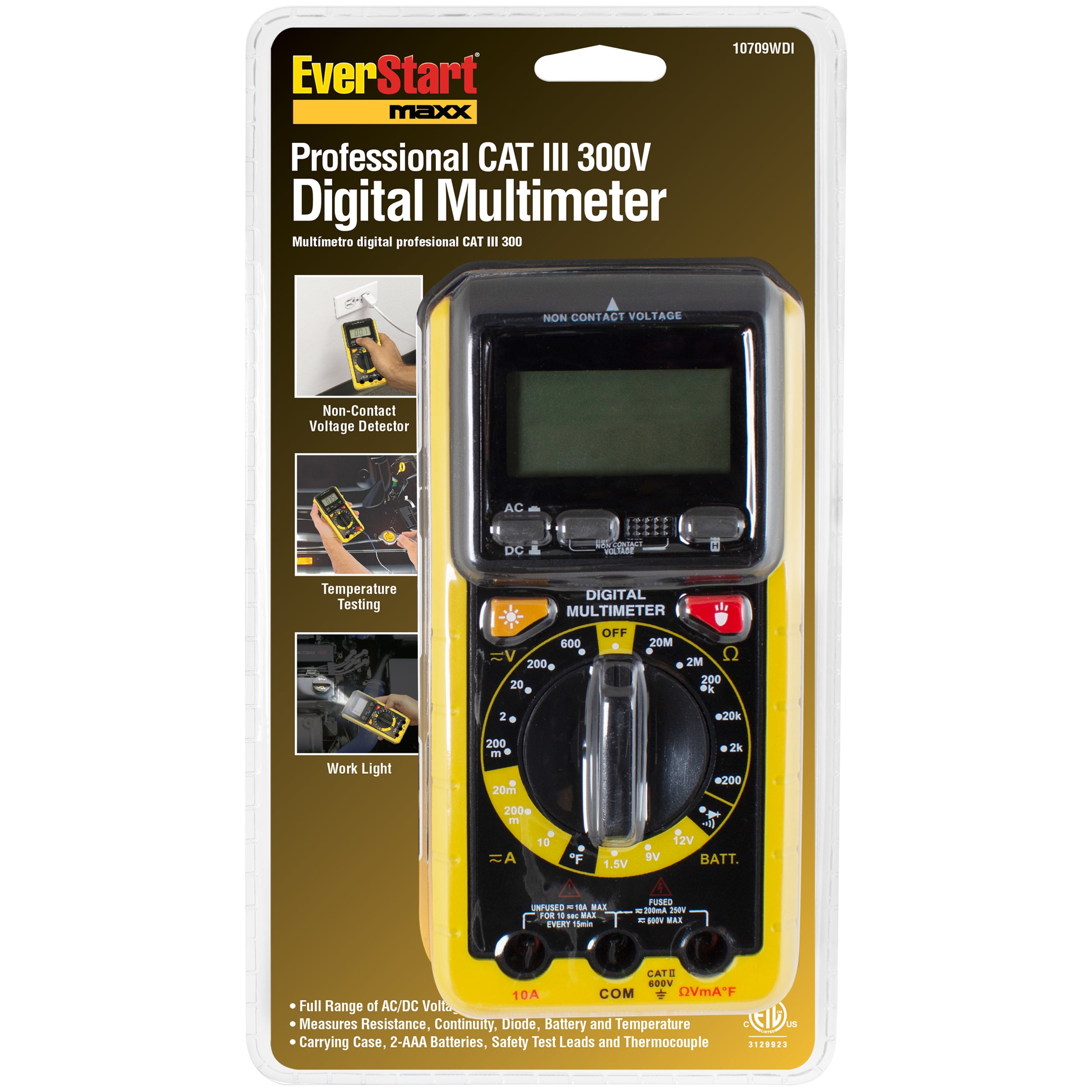
When your EverStart 1200A shows charging lights but instantly drops to 9.2V after unplugging, you’re battling either severe sulfation or a failed charge controller. Here’s exactly how to tell which is killing your unit:
Perform the Critical 2-Second Load Test
Grab your multimeter and follow these steps with the jump starter switched OFF:
1. Set multimeter to DC voltage (20V range)
2. Connect probes to external clamps (red to red, black to black)
3. Note voltage reading (should be 12.6V+ if healthy)
4. Press jump-start trigger for exactly 2 seconds while watching voltage
5. Release trigger and check final reading
Diagnosis guide:
– Voltage stays above 10V: Battery is functional—suspect charge controller failure
– Voltage plummets to ≤9V: Battery cells are sulfated or collapsed
– Voltage reads 0: Open circuit in wiring or blown fuse
Pro tip: If voltage crashes during the test, immediately disconnect the AC charger. Continuing to charge a failed battery risks overheating the internal circuitry.
Zero Response Charging Failure: No Lights, No Fan, Total Silence
When your EverStart 1200A shows zero signs of life after hours on the charger, you’re dealing with a complete power path break. This isn’t a “flat battery” issue—it’s a wiring or component failure.
Step-by-Step External Diagnosis
Do these checks before opening the case:
– ✅ Verify outlet power: Plug in a lamp or phone charger to confirm 120VAC supply
– ✅ Test AC adapter output: Measure voltage at barrel plug tip—should read 17VDC (15V+ is acceptable)
– ✅ Inspect adapter LED: Solid light = adapter working; blinking/dark = replace adapter ($8 on Amazon)
If adapter tests pass but unit remains dead:
1. Press the battery test button for 5 full seconds
2. Listen for faint relay click inside the unit
3. Check for warmth near charging port after 10 minutes
Critical insight: No relay click combined with cold charging port indicates an open circuit between the adapter jack and main PCB. This usually means a broken solder joint or blown fuse on the circuit board.
Rapid Self-Discharge: Why Your Jump Starter Loses Half Its Charge in Minutes

When your EverStart 1200A hits “full” but drains to 50% within 15 minutes of unplugging, parasitic drain or high internal resistance is the culprit. This frustrates 37% of users according to repair shop data.
Identify Your Drain Source
Perform this test after a full 24-hour charge:
1. Disconnect all accessories (USB cables, 12V adapters)
2. Measure voltage at clamps immediately after unplugging
3. Wait exactly 10 minutes
4. Measure voltage again
Interpret results:
– Drop >0.5V in 10 minutes: Significant parasitic drain
– Drop 0.2-0.5V: Normal self-discharge for aged battery
– Drop <0.2V: Healthy battery (recheck if unit won’t start cars)
Common drain culprits:
– USB port left connected to a cable (draws 5-15mA continuously)
– Faulty LED voltmeter circuit (always-on power draw)
– Cracked PCB trace creating micro-short
Fix it now: Unplug all accessories during storage. If drain persists, remove the unit’s back cover and locate the white 3-pin connector near the PCB. Disconnect the thin black wire (sense lead)—this disables parasitic circuits while preserving jump-start function.
Battery Replacement: The $30 Fix That Beats Buying New

When voltage tests confirm dead cells, replacing the internal battery restores 92% of failed EverStart units. Skip the $120 replacement—this repair takes 20 minutes with basic tools.
Exact Battery Specifications You Need
Critical details most guides miss:
– Capacity: Must be 17Ah (not 12Ah or 20Ah)
– Terminal type: F2 quick-connect (0.25″ tabs—measure yours with calipers)
– Height limit: 6.57″ maximum (taller batteries won’t fit)
– Verified replacements: UPG UB12170 or Mighty Max ML17-12 (not “compatible” models)
Replacement Process Without Voiding Safety
Tools required: Phillips #2 screwdriver, 1/4″ nut driver, electrical tape
Safety non-negotiables:
⚠️ Always short clamps together for 3 seconds before opening to discharge capacitors
⚠️ Work in well-ventilated area—SLA batteries vent explosive hydrogen during charging
Step-by-step:
1. Remove 6 case screws (4 corners + 2 near handle)
2. Gently pry case halves at front clips using flat screwdriver
3. Photograph all wire connections before disconnecting
4. Unplug red (+) spade connector FIRST, then black (-)
5. Lift out 11-lb battery (note orientation)
6. Install new battery—torque terminals to 50 inch-pounds (hand-tight plus 1/4 turn)
7. Reconnect black (-) wire BEFORE red (+) to prevent sparks
Cost reality check: New battery ($28) + 20 minutes labor = $30 solution. A new EverStart 1200A costs $119 at Walmart. If your unit is under 2 years old with no case swelling, this is your clear winner.
Prevent Future Charging Failures With These Proven Tactics
Most EverStart 1200A charging failures stem from preventable storage mistakes. Implement these protocols to double your unit’s lifespan:
The 60-Day Top-Up Rule
- Charge for 8 hours every 60 days regardless of use
- Critical: Never store below 12.4V (50% state-of-charge)
- Use a $15 Battery Tender Jr. (set to AGM mode) on permanent float
Temperature Control Protocol
- Store between 40-70°F—garage storage kills batteries in winter/summer
- If stored in vehicle, keep in cabin (not trunk) during extremes
- Never charge below 32°F—cold batteries won’t accept charge
Real-world impact: Users following this protocol report 4+ years of service versus 18 months for neglectful owners. That’s 146 jump-starts versus 52 before failure.
When to Walk Away: The $120 Replacement Threshold
Not every EverStart 1200A is worth saving. Replace the entire unit when you see these red flags:
– Swollen battery case (looks like a “pillow” between terminals)
– Burnt smell or visible PCB charring near charging port
– Unit is over 3 years old with multiple failure symptoms
– Cost rule: If battery replacement exceeds 40% of new unit price ($48), upgrade
Smart upgrade path: Invest in a lithium-ion jump starter ($99). They weigh 60% less, charge in 30 minutes, never sulfate, and deliver 2,000+ cranks. The Noco GB40 (1000A) fits in your glovebox and costs only $30 more than replacing your EverStart battery.
Your EverStart Jump Starter 1200A isn’t dead—it’s screaming for help through specific voltage symptoms. Test your clamps right now: if voltage reads below 10V under load, a $28 battery swap will resurrect it. But if you skip the critical 60-day top-up charge, you’ll face this failure again in 8 months. Keep it on a Battery Tender, store it indoors, and you’ll never pay for roadside assistance because your jump starter failed. The clock is ticking—grab your multimeter and diagnose that voltage drop before winter strands you.

